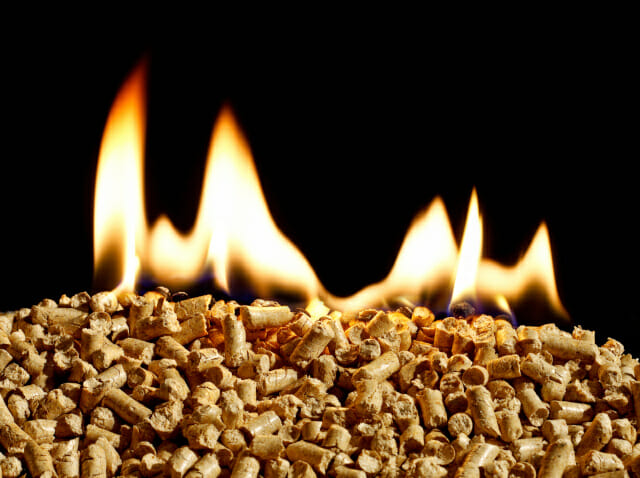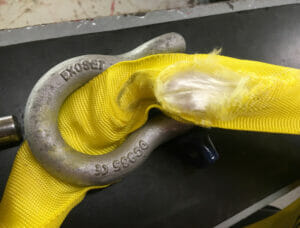Hawkins has investigated many fires associated with biomass boilers, but over the past few years I have noticed an increase in instructions of fires relating to their use.
WHAT ARE BIOMASS BOILERS?
Biomass is the use of organic matter as a fuel, used since people first burnt wood to cook food and keep warm. More recently, it has been part of a drive for using renewable energy sources to fuel our homes and businesses, rather than fossil fuels.
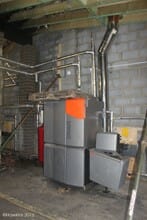
Biomass boilers can provide both hot water (for either heating or direct use) as well as electricity (but not always).Biomass boilers usually burn timber in the form of either shredded wood or wood pellets, but technically, they can burn any plant-based material. The timber can be virgin wood (i.e. direct from trees), or waste wood (such as pallets or industrial/commercial waste). Any wood burnt in the boiler needs to be dried beforehand, so that it has a low moisture content and burns efficiently, so some premises have both timber shredders and dryers on site so that they generate their own fuel. In one case I have seen, several biomass boilers were used to dry shredded wood that was subsequently burnt by those, and other biomass boilers that were producing heat and hot water.
The output of biomass boilers can range from 15kW to more than 1000kW. Though most premises will just have a single boiler, others will have multiple; on one site I attended, there were more than 30 biomass boilers in use.
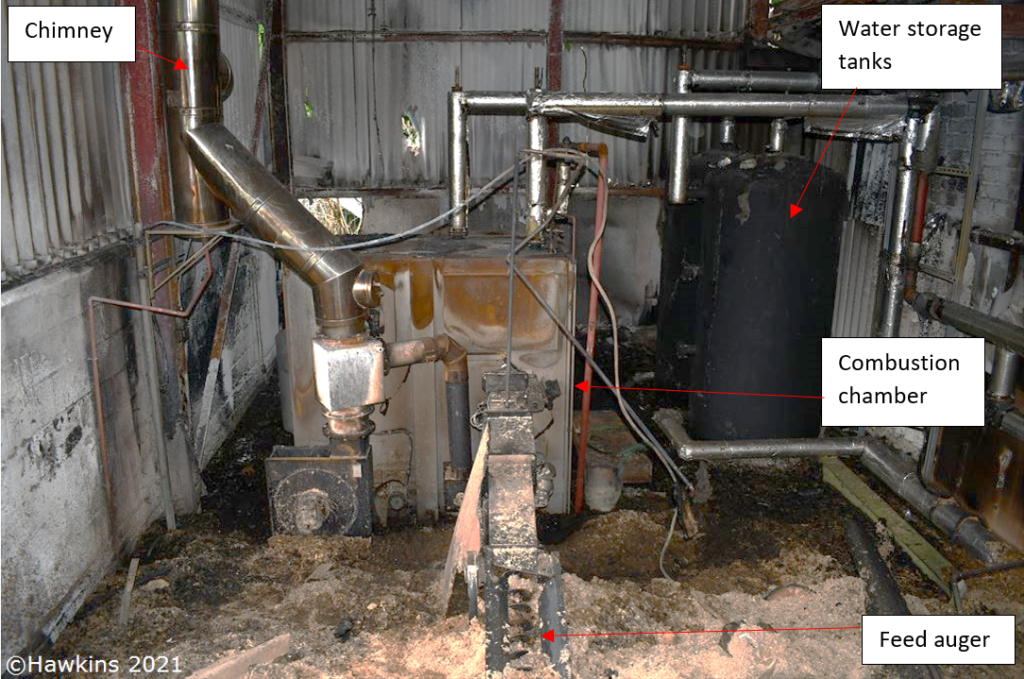
HOW DO THEY WORK?
Biomass boilers contain a large combustion chamber that burns the wood. Either augers or gravity fed fuel hoppers, combined with conveyor belts, are normally used to feed the timber from a timber store into the combustion chamber. An auger is a helical screw that draws the fuel from the store into the boiler as it rotates, whereas hoppers are containers for the wood pellets, both of which ensure uninterrupted operation of the boiler. The wood burns in the combustion chamber generating hot combustion gases, which are passed through a heat exchanger, so heating water. The hot water can then be pumped around the building and/or held in a storage tank. If the system is one that generates electricity, the hot combustion gases are fed through a boiler to generate steam. The steam can be passed through a turbine to generate electricity.
HETAS (Heating Equipment Testing and Approvals Scheme) provides a registration scheme for the installation and maintenance of biomass boilers. As with most boilers, they require regular maintenance, which includes cleaning inside both the boiler and its chimney.
PROBLEMS THAT CAN RESULT IN FIRES
Investigating fires at biomass boilers is essentially the same as investigating any other fire; biomass boilers contain electrical components, therefore an electrical fault, particularly one within the control cabinet, is always a possibility. However, there are many occasions when little remains of the boiler, its fuel store or the building after a fire, and an understanding of the less well-known risks can assist in the investigation of this equipment.
Biomass boilers are essentially solid fuel stoves, and therefore causes of fire associated with these should also be considered. The distance between the boiler and its chimney can be crucial to understanding whether heat from either the boiler or chimney has ignited nearby material or the building structure, particularly where the chimney passes through any walls or ceilings. Another possible cause of fire is burning brands or embers emitted from the chimney, which can land on and ignite combustible materials (such as the fuel store or within the dryers). Ash removed from the boiler should be stored in a metal-lidded container and away from combustible materials until it is cool. If not, the heat from the ash can ignite nearby combustible materials. Chimneys should be cleaned to prevent soot deposits from igniting, which could result in a fire in the flue that also could spread to nearby combustible materials.
Some potential causes of fire directly relate to the fuel. Wood in storage constantly decomposes, which results in heat being generated. If the heat cannot escape, self-heating can occur, resulting in the ignition of the fuel store. Some fuel stores have sweeping arms that constantly rotate, moving the fuel to try to prevent self-heating from occurring. Where waste wood is used as the fuel, nails or screws within the wood are often present. If these come into contact with, or grind against, other metal items, such as the auger or sweeping arm, sparks can result. Sparks can then ignite the fine wood dust amongst the shredded timber, and result in a fire in the fuel store.
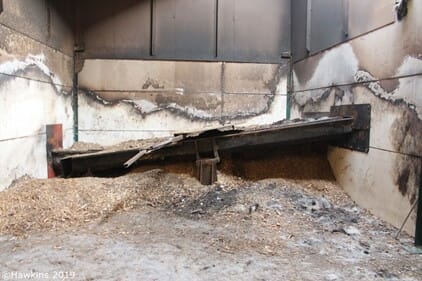
The fuel store for biomass boilers is usually located adjacent to the boiler, and fed either by gravity (from a hopper) or by an auger pulling wood from a store into the combustion chamber of the boiler. Timber enters the combustion chamber constantly, resulting in a combustible path between the boiler and its fuel store. In some instances, flames can burn back from the boiler to the fuel store. Many boilers have dampers to create a fire break between the fuel store and boiler, as well as sensors that operate water extinguishers in an attempt to prevent burning upstream from occurring, although they are not always successful.
Some boilers have sophisticated computers that detail all the parameters of the various sensors around the boiler, including temperature and pressure sensors. Where these exist, the user often has the opportunity to connect the boiler to the cloud and store information remotely. Being able to obtain this information can often assist a fire investigator in identifying what went wrong and subsequently what caused the fire.
Hawkins has investigated many fires involving biomass boilers and as the trend for greener energy continues, it is likely that such fires will continue to increase. We have both the knowledge and expertise to investigate incidents involving not only biomass boilers but all types of boilers.
ABOUT THE AUTHOR
Camilla Gosling is a fire and explosion investigator based in the Bristol office. Since joining Hawkins in 2006, Camilla has investigated a diverse range of incidents, ranging from small domestic fires to multi-million pound losses in the commercial sector.
